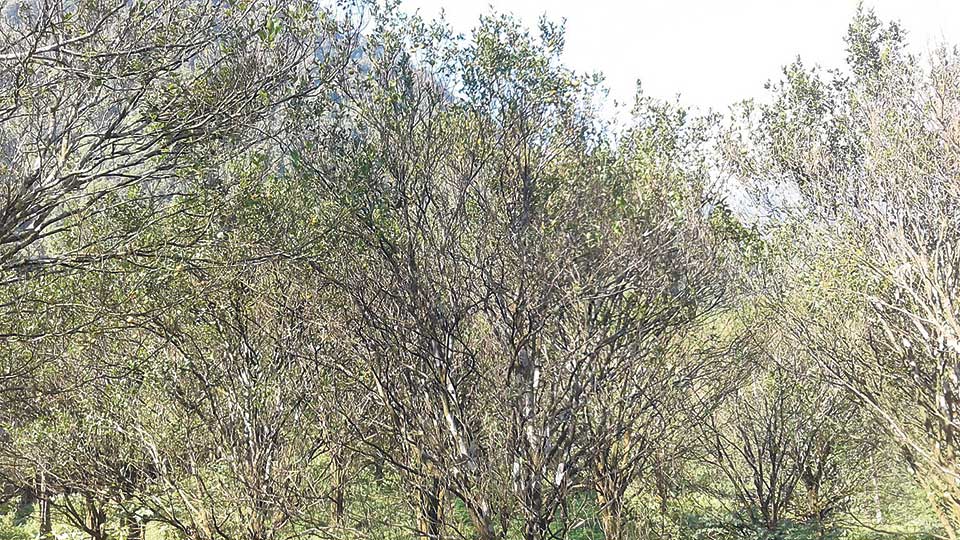
OR
Ilam’s ‘orange capital’ becoming history
Published On: December 26, 2017 08:42 AM NPT By: Bhim Chapagain

ILAM, Dec 26: Salakpur in Rong Rural Municipality Ward 6 of Ilam district was considered to be hub for orange farming. But not even one decade after the village started farming oranges, 90 percent of the orange trees have dried out.
Just five years ago, Salakpur had sold oranges worth more than Rs 10 million. The oranges used to be exported not only to nearby markets, but markets as far as Kolkata in India.
"Salakpur, once considered the orange capital of the region, is now but history. This year we not only saw a steep decrease in production but also the ruin of the orange trees," said Gobinda Paudel, a local.
The orange farmers of Salakpur sold Rs 600,000 worth of oranges in a single season with each farmer selling Rs 300,000 to 500,000 worth of oranges in a harvest.
However, sale of oranges has come to a halt this year with not a single unit of orange being exported from the district.
"Three years ago, I had sold Rs 300,000 worth of oranges from my orchard. However, this year, not 30 oranges were harvested from my orchard as most plants remain lifeless," said Nanda Lal Adhikari, a local.
Oranges produced from the orchards of Salakpur had gained popularity in districts of eastern Nepal like Ilam, Jhapa, Sunsari, and Morang and West Bengal of India.
The region saw an influx of visitors during winter to taste and purchase oranges. "Up to 3,000 individuals flocked Salakpur a few years ago but now just memories of those days remain," said Dambar Rai explaining that this year's yield was not even adequate to fulfill personal demands.
Locals here have been dependent upon Indian technicians for knowledge on orange farming and have also been using chemical fertilizers forbidden in Nepal. "Fertilizers outlawed by Nepal are in use here and the excessive use of chemicals may have resulted in the destruction of orange trees," stated a local farmer.
Farmers here have been cultivating oranges and cardamom in the same field.
Due to the difference in the habitat of the two plants, farmers assume that their lack of knowledge in the field has resulted in the drying of orange trees.
However, cardamom plants have thrived, giving the farmers a glimmer of hope.
You May Like This

History not enough to retain party image: NC Leader Singh
SURKHET, June 9: Nepali Congress leader Prakash Man Singh has said glorification of party's history does not ensure its image... Read More...

NMB Capital named issue manager for SCBNL FPO
KATHMANDU, Jan 16: Standard Chartered Bank Nepal Ltd (SCBNL) has appointed NMB Capital Ltd as the issue manager to raise... Read More...

Six involved in planting bombs in capital arrested so far
KATHMANDU, Oct 22: Police have succeeded in arresting six out of ten people involved in masterminding bomb attacks at various schools... Read More...








Just In
- Qatar Emir meets PM Dahal, bilateral agreement and MoUs signed between Nepal and Qatar
- Employee involved in distribution of fake license transferred to CIAA!
- Youth found dead in a hotel in Janakpur
- CM Kandel to expand cabinet in Karnali province, Pariyar from Maoist Center to become minister without portfolio
- Storm likely to occur in Terai, weather to remain clear in remaining regions
- Prez Paudel solicits Qatar’s investment in Nepal’s water resources, agriculture and tourism sectors
- Fire destroys 700 hectares forest area in Myagdi
- Three youths awarded 'Creators Champions'



_20240423174443.jpg)







Leave A Comment